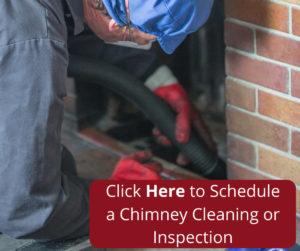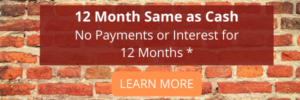How to Achieve a Picture Perfect Fireplace for Thanksgiving
Preparing for the Thanksgiving holiday is turning out to be a bit different. Gone this year is the uncle who throws crumbs of food and bits of trash in the fireplace. Or the kids that like to poke the fireplace logs sending sparks in every direction.
This year, we get to create our own scene. Once you and your family have finished the delicious meal, now it’s time to make the rounds of Internet calls. Whether you use Zoom, Facebook, Skype or any other system, one thing is for sure…you need a warm, inviting, good-looking background.
The fireplace is the perfect go-to background, especially when you can see and hear the crackling of the fire. Put a little extra time in decorating around the fireplace, and of course, include the cookies and pumpkin pie. To ensure chaos isn’t erupting behind you, make sure your fireplace and chimney is ready to go.
Begin with a Chimney & Fireplace Inspection
By getting a chimney inspection you’ll help to ensure smoke goes up and out of the house, debris is not blocking it and any animals are safely living outside of your chimney. You certainly don’t want your online guests to think you smoked the turkey in the fireplace.
Chimney backup or a Smokey fireplace is usually caused by an insufficient draft in the flue. However, there are lots of other reasons for smoke backup including the partially open dampers, too small of a flue or a dirty chimney. This is one situation that’s best left to a certified technician to identify and repair.
Debris knows how to make its way into the chimney. Leaves, twigs, paper, plastic, and anything else flying around on windy days, has this special radar, and when it finds a chimney, it’ll try to make its way in. If the chimney doesn’t have a chimney cap, or if it was blown off or shifted from the high winds, debris found a new home!
Animals are wonderful to watch outside. We’ve watched a couple of the squirrels in our yard go from a lean body to a very plump size, all in preparation for winter. What comes next is a cozy place to sleep. The chimney is a perfect. It’s warm and protects the animals from the outdoor elements. If there isn’t a chimney cap or if the cap is loose or moved in a way to squeeze in…perfect!
What is a 14 Point Inspection?
A 14 point chimney inspection for your fireplace tells us a story about the events that occurred over the past year’s freeze and thaw cycle. It reveals to us any wear and tear, the frequency of use and the age of the chimney. This is great information to have in order to stay on top of any necessary chimney repairs and know the current conditions of worthiness for use.
Since the chimney is high on the roof, we take pictures of your chimney to show you the current condition. If any repairs are needed, you can see it for yourself. You have a little time before the ‘live’ internet chat on Thanksgiving Day. As part of your preparations, get your chimney swept and inspected today. Call 877-244-6349.
This post first appeared on https://www.superiorchimney.net



 A chimney without a chimney cap is like a house with no roof. Your chimney is, of course, an exit route for combustion gases. But, without a chimney cap, your chimney is also an open invitation for various unwanted elements that get inside. If there is no chimney cap covering your flue pipe, experts recommend that you contact a qualified chimney sweep without delay. Your
A chimney without a chimney cap is like a house with no roof. Your chimney is, of course, an exit route for combustion gases. But, without a chimney cap, your chimney is also an open invitation for various unwanted elements that get inside. If there is no chimney cap covering your flue pipe, experts recommend that you contact a qualified chimney sweep without delay. Your  Downdrafts are blasts of cold air that can enter your home and cause your heating costs to rise. Chimney caps prevent downdrafts.
Downdrafts are blasts of cold air that can enter your home and cause your heating costs to rise. Chimney caps prevent downdrafts.
 There is no comparison to the soothing sounds and aroma of relaxing beside a natural
There is no comparison to the soothing sounds and aroma of relaxing beside a natural  Increases Home Value
Increases Home Value


 When you hear the term “certified chimney sweep,” it’s usually in reference to a person who carries a professional certification through the Chimney Safety Institute of America (CSIA). Certification is important when you’re hiring a person to
When you hear the term “certified chimney sweep,” it’s usually in reference to a person who carries a professional certification through the Chimney Safety Institute of America (CSIA). Certification is important when you’re hiring a person to  Your chimney is too important to trust to an individual who is not thoroughly trained to work on it. Errors during chimney cleaning, inspections and repairs can lead to major issues down the line including risks to the safety of everyone living in your home and the home itself.
Your chimney is too important to trust to an individual who is not thoroughly trained to work on it. Errors during chimney cleaning, inspections and repairs can lead to major issues down the line including risks to the safety of everyone living in your home and the home itself.